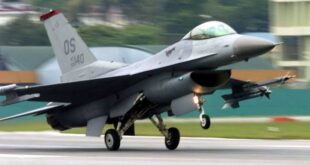At the cumulative end of both Operation Trident and Python, Karachi had suffered enormous losses. The sinking of PNS Khaibar, and PNS Muhafiz, and crippling of PNS Shahjahan, and the later damaging of PNS Dacca had a significant impact on the operational events in the Arabian Sea. Besides naval ships, several Karachi-bound merchant ships were sunk or damaged because of the Indian anti-ship missile assaults. Seeing the outcome of Trident and Python, the Indian navy figured out the third missile attack, code-named ‘Operation Triumph’ on 10 December 1971. However, PNS Hangor sank INS Khukri just a day before the launch of Triumph which changed almost everything in the Arabian Sea.
The Indian navy was on a roll in December 1971. Indian naval planners were bent upon avenging Operation Somnath that Pakistan naval ships undertook in the 1965 War routing the town of Dwarka and destroying key naval installations there. Long before the practical use of sea-based land attack missiles, the Pakistan Navy conducted a real ‘from the sea’ operation that had caught Indians totally off guard. The presence of PNS Ghazi made sure that no Indian surface ship had dared pursue the Pakistani surface flotilla that had carried out the Dwarka bombardment. It was an unpredictable operation that still lives in the annals of Indian military history.
Learning the lessons of the 1965 War was one of the cornerstones of the Indian naval strategy that manifested in the 1971 War. The Indian navy knew the limitations of Pakistan navy’s air surveillance and less guarded Karachi port complex. Newly acquired Soviet missile boats armed with Styx SS-N-2B anti-ship missiles were timely and innovatively utilized in a bid to ‘settle’ score for the Dwarka bombing. Indian navy’s Operation Trident, executed on the night of 4/5 December resulted in the loss of PN ships Khaibar and Muhafiz and over 290 lives. Whereas Operation Python, conducted on the night of 8/9 December, damaged PNS Dacca beyond repairs. Both Trident and Python resulted in the loss of fuel storage at Kemari, which, however, was recovered swiftly.
Pakistan Navy inherently aligned itself with the doctrine of ‘active response’ given the fact of its geographic contiguity with a numerically superior and militarily provocative neighbour. Indian state-sponsored and state-supervised support to separatists in East Pakistan compelled the Pakistani military to prepare for the war that most certainly was in the offing. Pakistan Navy’s operational estimates were suggestive of the ‘forward deployment’ of naval assets in a quick timeframe by the start of November 1971. PNS Hangor and PNS Ghazi were deployed to keep Indian capital ships under watch at Mumbai and Visakhapatnam respectively. PNS Hangor sailed Karachi on 26 November to be around Bombay harbour for operational tasks.
Once in the area, Hangor had an eventful deployment. There were several operational defects and technical inhibitors, which otherwise would have meant the return of the vessel back to base. The captain and the crew of the boat remained poised, hopeful, and resilient to face the turbulence and came out clean. On one such occasion, as Vice Admiral (then-Commander) Ahmed Tasnim, the Commanding Officer (CO) of Hangor, would later recall, was the closing of an Indian naval destroyer while the submarine was at the surface near Diu Head. The submarine appeared, to the destroyer, just like a fishing boat due to the exceptional lateral thinking of the captain, who was able to disguise a military ship into a non-combatant vessel. The Indian ship approached Hangor and later changed course. The crew rectified the defect and then dived for the next patrol spot.
The war hadn’t been declared as of 2/3 December as Hangor didn’t have orders to engage the adversarial ships. While in position off Bombay, Hangor did pick up a trail of several ships on a course towards Karachi. CO Hangor evaluated it to be a surface group probably destined to undertake operations off Karachi harbour. The submarine attempted to warn of the impending attack by breaking the radio silence. Indians picked up the transmission and two ASW frigates, INS Khukri and INS Kirpan were tasked to search, locate and neutralize a probable Pakistani submarine in the area. In the meantime, Operation Trident had been undertaken followed by Python by the morning of 9 December.
 Pride News Daily NEWS
Pride News Daily NEWS





